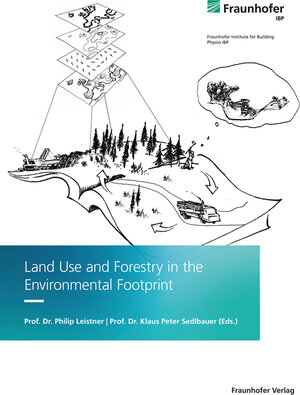Land Use And Forestry In The Environmental Footprint
von Rafael Horn und weiteren, herausgegeben von Philip Leistner und Klaus Peter SedlbauerLand using practices are at the core of many human activities with an impact on the environment. Its consideration in methods such as Life Cycle Assessment (LCA) is complex and oftentimes requires experts to perform studies and understand results.
This report focuses on land use impact assessment methods in LCA studies applied to forestry. It presents an in-depth investigation of the state of the art in forestry modelling and LCA, considering the EFISCEN space forest model, the UNEP/SETAC land use framework, the European Commissions’ Environmental footprint, and the Fraunhofer LANCA® framework. Building on these, recommendations are provided for the modelling framework, the improvement of existing and the introduction of new indicators. Improvements for LANCA® are presented and Soil Organic Carbon (SOC) as well as Human Appropriated Net Primary Production (HANPP) are introduced as new indicators. The improved framework is applied to an exemplary case study using different modelling approaches based on EFISCEN space. The findings are finally condensed in a recommendation section for developers, practitioners, stakeholders, and policymakers.






